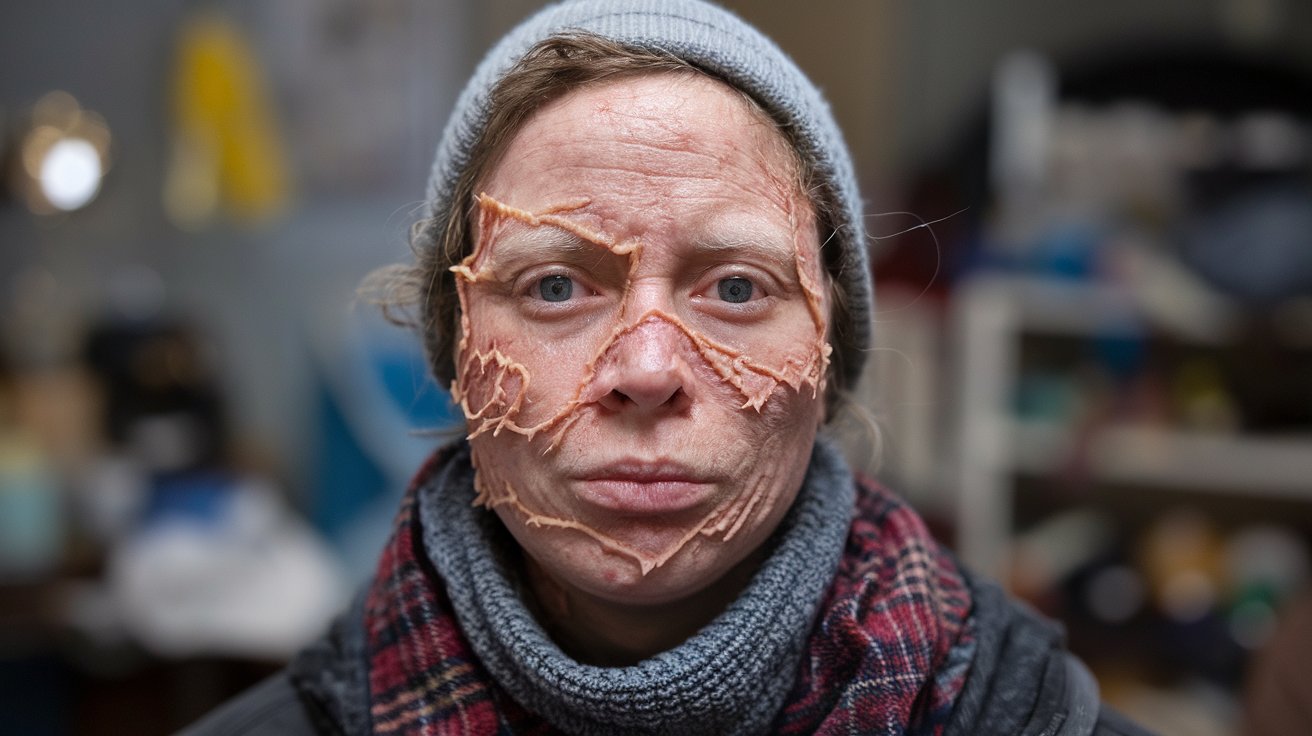
What is Netherton Syndrome? Netherton Syndrome is a rare genetic disorder that affects the skin, hair, and immune system. It’s caused by mutations in the SPINK5 gene, leading to a faulty protein called LEKTI. This protein normally helps control skin shedding and immune responses. Without it, the skin becomes red, scaly, and prone to infections. Babies with this condition often struggle with dehydration and growth issues. As they grow, they may also face hair abnormalities and severe allergies. Managing Netherton Syndrome involves treating symptoms and preventing complications, but there’s no cure yet. Understanding this condition can help improve the lives of those affected.
Key Takeaways:
- Netherton Syndrome is a rare genetic disorder affecting the skin, hair, and immune system, leading to challenges like dehydration, infections, and hair abnormalities.
- There is no specific treatment for Netherton Syndrome, but managing symptoms, preventing infections, and addressing complications are crucial for those affected.
What is Netherton Syndrome?
Netherton Syndrome is a rare genetic disorder that affects the skin, hair, and immune system. It presents a unique set of challenges for those affected. Let's explore some key facts about this condition.
- Netherton Syndrome is a rare autosomal recessive disorder of cornification.
- It affects approximately 1 in 100,000 to 1 in 200,000 newborns.
- The condition is named after dermatologists Comel and Netherton, who first described it in the 1950s.
Causes of Netherton Syndrome
Understanding the root cause of Netherton Syndrome helps in grasping the complexities of the condition.
- Netherton Syndrome is caused by mutations in the SPINK5 gene.
- This gene is located on chromosome 5.
- The SPINK5 gene provides instructions for making a protein called LEKTI.
- LEKTI is a type of serine peptidase inhibitor.
- It controls the activity of enzymes called serine peptidases, which break down other proteins in the skin and thymus.
Pathogenesis and Symptoms
The way Netherton Syndrome manifests in the body is intricate and multifaceted.
- Mutations in the SPINK5 gene result in a LEKTI protein that cannot control serine peptidase activity.
- This leads to an overactive breakdown of proteins in the stratum corneum, the outermost layer of the skin.
- Newborns with Netherton Syndrome typically present with generalized scaling erythroderma.
- Some infants may have a tight, clear sheath covering their skin called a collodion membrane.
- Because the skin is "leaky," newborns are at high risk of dehydration, sepsis, and other life-threatening infections.
- Affected infants often experience failure to thrive, meaning they fail to gain weight and grow at the expected rate.
Skin and Hair Abnormalities
Netherton Syndrome significantly impacts the skin and hair, leading to various complications.
- The skin may continue to be red and scaly, especially during the first few years of life.
- Some individuals experience intermittent redness or outbreaks of ichthyosis linearis circumflexa.
- Itchiness is a common problem, and scratching can lead to frequent infections.
- Dead skin cells often accumulate in the ear canals, which can affect hearing if not removed regularly.
- People with Netherton Syndrome have hair that is fragile and breaks easily.
- This hair shaft abnormality is known as trichorrhexis invaginata or bamboo hair.
Immune System and Allergies
The immune system of individuals with Netherton Syndrome is often compromised, leading to various allergic conditions.
- Most individuals have immune system-related problems such as food allergies, hay fever, asthma, or eczema.
- These allergies and conditions are part of the atopic diathesis associated with Netherton Syndrome.
- Elevated serum levels of immunoglobulin E (IgE) are common, indicating an increased immune response to allergens.
Genetic Inheritance and Diagnosis
Knowing how Netherton Syndrome is inherited and diagnosed is crucial for managing the condition.
- Netherton Syndrome is inherited in an autosomal recessive pattern.
- Both copies of the SPINK5 gene in each cell must have mutations for the condition to manifest.
- Carriers of the mutated gene typically do not show symptoms but can pass the mutation to their offspring.
- Diagnosis can be challenging but is often made based on clinical presentation.
- Examination of abnormal hair under a microscope shows trichorrhexis invaginata.
- Skin biopsy and DNA testing may also be performed to confirm the diagnosis.
Management and Treatment
Managing Netherton Syndrome involves addressing symptoms and preventing complications.
- There is no specific treatment for Netherton Syndrome.
- The goals of treatment are to manage symptoms, prevent skin infections, and address related complications.
- Topical treatments for skin conditions, antibiotics for infections, and management of allergies and asthma are common.
- Symptoms tend to improve with age, but periods of little or no disease symptoms are interspersed with intermittent exacerbations.
- The condition may increase the risk of skin cancer developing over time.
Complications and Additional Challenges
Living with Netherton Syndrome comes with various complications and challenges.
- Individuals are at risk for hypernatremic dehydration, failure to thrive, sepsis, and chronic skin infections.
- Older children may experience severe atopic dermatitis, a chronic inflammatory skin condition.
- Many individuals also suffer from asthma and other allergies.
- Some experience outbreaks of ichthyosis linearis circumflexa, involving patches of multiple ring-like lesions.
- The skin is abnormally absorbent, leading to excessive blood levels of topical medications.
- Difficulty regulating body temperature can lead to hypothermia or hyperthermia.
Treatment Innovations and Genetic Counseling
Advancements in treatment and genetic counseling offer hope for those affected by Netherton Syndrome.
- IVIG therapy has been shown to be effective in managing severe allergic reactions and autoimmune responses.
- Dupilumab, a monoclonal antibody, has shown significant improvement in symptoms and quality of life.
- Subcutaneous immunoglobulin replacement therapy has been successfully used in some cases.
- Genetic counseling is essential for families to understand the inheritance pattern and risk of passing the mutated gene to their offspring.
- Prenatal diagnosis of Netherton Syndrome is possible through genetic testing.
Understanding Netherton Syndrome
Netherton syndrome is a rare genetic disorder affecting the skin, hair, and immune system. Caused by mutations in the SPINK5 gene, it leads to symptoms like red, scaly skin, fragile hair, and immune issues. Newborns often face severe complications, including dehydration and infections. As they grow, symptoms can vary but usually include itchiness, frequent infections, and hearing problems due to skin buildup in the ears. Managing this condition involves a mix of topical treatments, antibiotics, and therapies for allergies and asthma. While there's no cure, early diagnosis and proper care can significantly improve the quality of life for those affected. Genetic counseling is crucial for families to understand the inheritance patterns and risks. With ongoing research, there's hope for better treatments and management strategies in the future.
Frequently Asked Questions
Was this page helpful?
Our commitment to delivering trustworthy and engaging content is at the heart of what we do. Each fact on our site is contributed by real users like you, bringing a wealth of diverse insights and information. To ensure the highest standards of accuracy and reliability, our dedicated editors meticulously review each submission. This process guarantees that the facts we share are not only fascinating but also credible. Trust in our commitment to quality and authenticity as you explore and learn with us.


